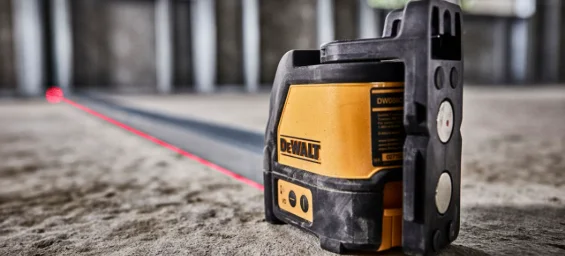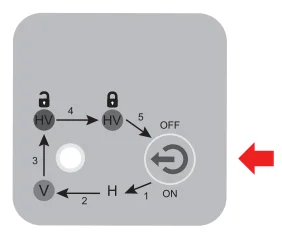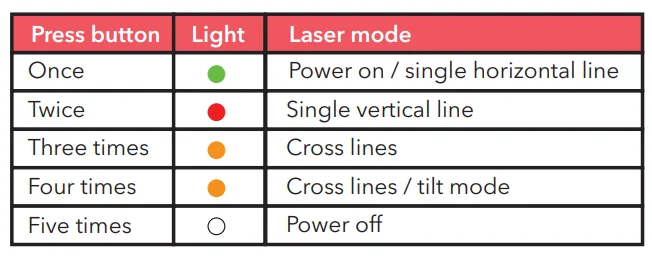![]()
Dartwood Self-Leveling Cross-Line Laser
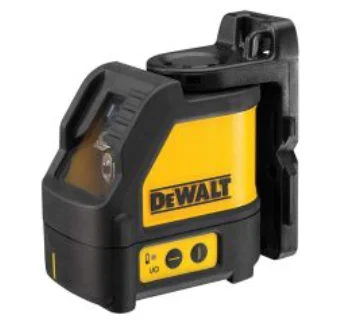
In the Box
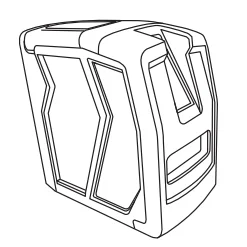
1 x cross-line laser level
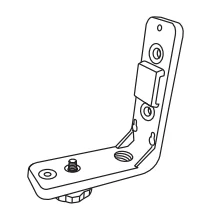
1 x magnetic pivoting base

2 x 1.5 V AA batteries
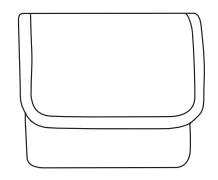
1 x carrying bag
Warning
- Children should never be left unattended with the laser level.
- Do not open up the laser level or remove any of the internal components.
- Do not aim the laser beam at people or animals.
- Use only for measuring purposes.
- Do not remove warning labels or safety instructions.
- Do not use in an explosive environment.
- Never drop or knock over.
- Ensure that you clean and store the item safely after use.
- Remove the battery if you won’t be using the device for an extended period.
Introduction to Parts
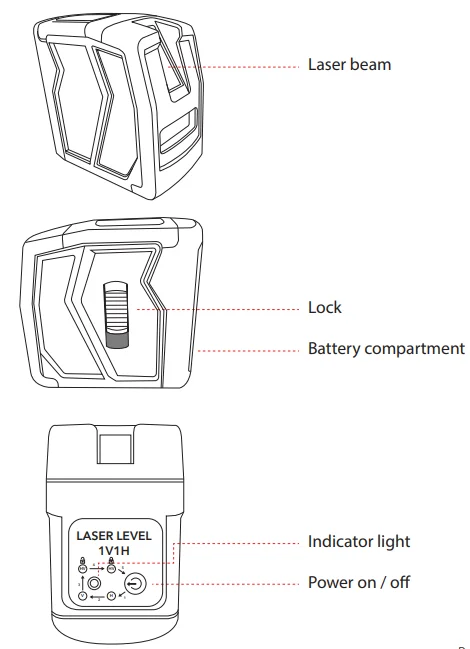
How to Use
- Insert two AA batteries into the battery compartment.
- Set the laser level on the floor or tripod. Note: If you use a tripod, place the bottom part of the laser level on the tripod and twist the screw of the tripod into the center hole.
- Press the lock downward to unlock the laser level (except in tilt mode).
- To turn on / off, press the Power button on the top of the laser level.

- Press the Power button to adjust the laser mode.

- Turn it off after use and lock the laser level by pressing the lock upward.
Cleaning Guidelines
- Clean after each use. Clean with a soft cloth only; use a damp cloth if necessary.
- Carry the device in the original case, and unlock after use.
Checking the Accuracy (tilt of plane relative to horizon)
- Set the laser level between two walls that are about 16 ft apart.
- Turn on the laser level and mark the crosspoint on the wall.
- Turn the laser level 180 degrees and mark a point on the opposite wall. Put the point at the cross point of the vertical and horizontal planes.
- Move the laser level to one of the walls at a distance of 2 – 2.3 ft (0.6 – 0.7 m) and make the same marks as described above.
- Measure the difference between [A1 – A2] and [B1 – B2]. If it is less than 1 in (2 mm), there is no need for calibration.
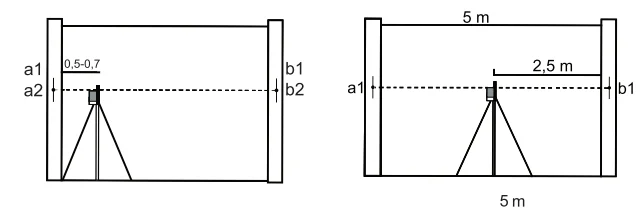
- For example, when you check the accuracy of a laser level, the difference is A1 – A2 = 0.2 in (5 mm) and B1 – B2 = 0.3 in (7 mm).
- Calculating the error: [B1 – B2] – [A1 – A2] = value of error
Checking the Straightness of the Horizontal Beam
- Set the laser level about 16 ft away from the wall.
- Mark the point where the horizontal and vertical lines cross.
- Keeping the laser level in the same location, turn it about 8.2 ft to the right.
- Look at the left “tail” of the horizontal line. If the beam is located relative to the point within the error range, then the setting is correct.
- Then, keeping the laser level in the same location, turn it about 8.2 ft to the left and check the beam.
Troubleshooting
I don’t see any lines after turning on the laser level. What’s wrong?
- Make sure it is level before using. The laser level will not turn on if the deviation is greater than 4 degrees.
- Make sure to unlock the laser level. It will not turn on if it is locked (except in tilt mode).
- Make sure you are not aiming the laser level through glass or any other material that can obscure the laser.
- Clean the laser window.
- Sudden temperature change. Please give a few minutes for the laser level components to adjust.
- Inspect the laser level thoroughly as it may have been damaged.
Specifications:
- Laser color: Red
- Laser safety class: Class 2 (IEC 60825-1:2014), output power < 1 mW
- Self-leveling range: 4°
- Accuracy: 0.08 in per 32.8 ft
- Laser wavelength: 630-650 nm
- Operating range: 49.2 ft
- Power source: 2 x 1.5 V AA batteries
- Screw thread: 1/4 in
- Operating temperature: 10 °F – 95 °F
- Weight: 7.8 oz
FOR MORE MANUALS BY DARTWOOD, VISIT MANUALSLIBRARYY
Dartwood Self-Leveling Cross-Line Laser-FAQs
What is a cross-line laser level used for?
It is used to project straight horizontal and vertical lines on walls, floors, or ceilings. This helps with leveling, aligning, or installing items like cabinets, tiles, or pictures.
What does self-leveling mean?
Self-leveling means the device automatically adjusts the laser line to be perfectly level, even if the tool itself is slightly tilted.
How does a Dartwood self-leveling laser work?
It uses an internal pendulum or sensor system to detect tilt and adjust the laser, projecting accurate horizontal and vertical lines instantly.
What is the difference between a cross-line laser and a dot laser?
A cross-line laser projects both horizontal and vertical lines at the same time, forming a cross. Dot lasers project individual points or spots.
What is the best color for a laser line?
Green lasers are brighter and easier to see in daylight or well-lit rooms, while red lasers work well indoors.
How far can this laser level reach?
The typical range is around 50–65 feet for standard visibility, but using a detector can extend it further, up to 330 feet in some models.
What are the main benefits of using a laser level?
It saves time, improves accuracy, allows hands-free operation, and ensures straight, level lines for both DIY and professional projects.
Are there any disadvantages?
Laser levels are more expensive than traditional spirit levels and need batteries or electricity. They may be unnecessary for very simple tasks.
Can it be used outdoors?
Yes, but visibility is reduced in bright sunlight unless you use a laser detector or a green-beam model.

